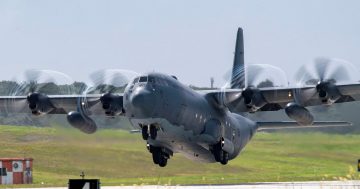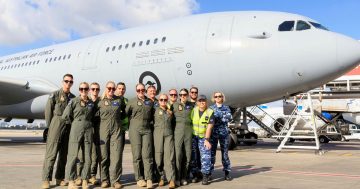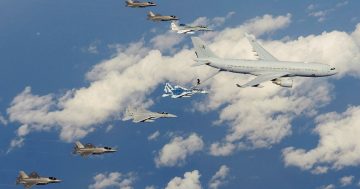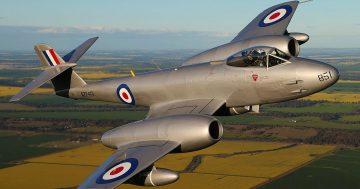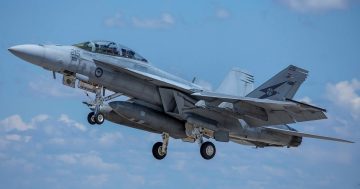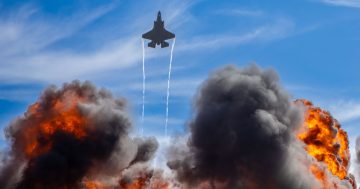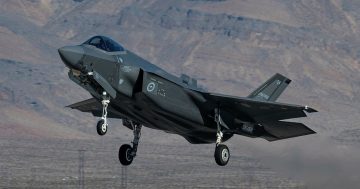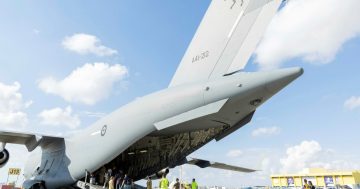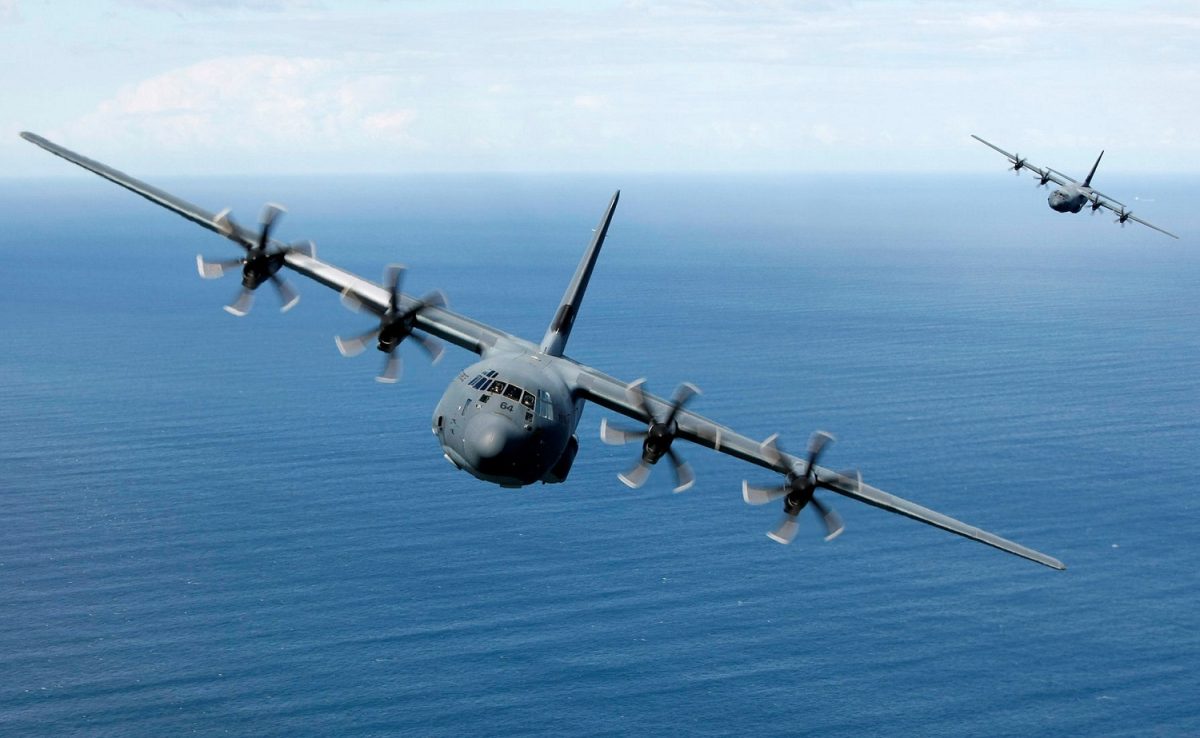
Two RAAF C-130J-30 Hercules off the coast of Sydney. Photo: ADF.
I must admit to doing another double-take when I read the press release on Sunday night (23 July) announcing the acquisition of 20 new Lockheed Martin C-130J-30 Hercules for the RAAF.
The purchase itself had been expected for some time, with Lockheed Martin executives telling media in late 2020 that Australia had asked for pricing and availability of new C-130Js. Confirmation that the aircraft was under consideration followed in March 2021, and at that time as many as 30 C-130Js were being talked about.
In November 2022, the then-new Labor Government confirmed it would press ahead with the Hercules acquisition under the new Project AIR 7404 Phase 1, and said that it was no longer considering alternatives such as the Embraer KC-390, Airbus A400M and Kawasaki C-2.
But to be frank, it’s unlikely any alternatives were ever seriously considered. Australia has a long and successful history of operating the ‘Herc’, with 12 each of the C-130A, C-130E, C-130H and the current stretched C-130J-30 models serving with distinction since 1958.
So, my sore neck was caused not so much by the fact the government was buying another batch of Hercs, but by the cost! At a stated $9.8 billion for 20 aircraft – when ordinarily they would have a list price of less than $200 million each – I just can’t make the maths work.
In November 2022, the US Defence Security Cooperation Agency (DSCA) published an approval by the US State Department of the sale of up to 24 C-130J-30s to Australia, for an estimated US$6.35 billion (A$9.43 billion) – my neck has only just healed after that first double-take!
Apart from the aircraft, this notification also listed a whole range of advanced equipment in support of the sale.
In most cases, when buying military equipment from the US, Australia will buy from the parent service that operates that equipment, not the manufacturer. In the case of the C-130J-30, which is manufactured by Lockheed Martin, all foreign military sales (FMS) go through the US Air Force.
The acquisition cost of the aircraft can have an up-front FMS fee impost of about 4 per cent. But the US military operates more than 350 C-130J Hercules of various models so buying FMS has the long-term advantage that sustainment, spare parts and upgrades to that equipment can also be bought through the FMS system, ultimately making these cheaper due to commonality and economies of scale.
The November 2022 DSCA notification showed Australia’s request included a comprehensive list of advanced equipment – far too long to list here – giving the RAAF’s new C-130Js capabilities far beyond traditional ‘trash-hauling’ transport operations.
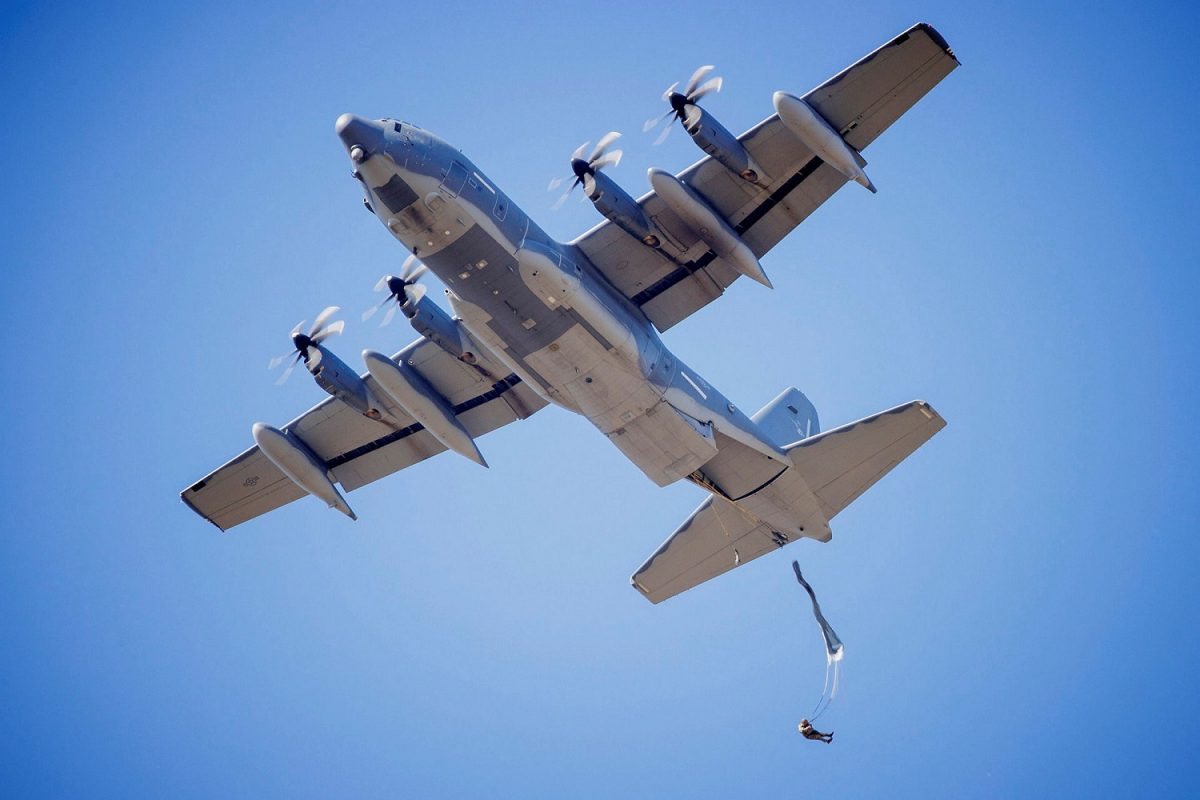
The US Air Force’s MC-130J Commando II features many of the advanced systems being bought for the RAAF’s new Hercules. Photo: ADF.
In particular, some of the listed communications equipment, optical, radar and electronic sensors, navigation systems, and self-defence systems would make our C-130J-30s almost the equivalent of the US Air Force’s advanced ‘missionised’ MC-130J Commando II special operations variant.
While the MC-130J has most of the equipment Australia is buying, it can also refuel helicopters and other aircraft in mid-air and can be refuelled itself, and has a reinforced structure and terrain-following radar that allows it to fly at low level.
Interestingly, the US Air Force’s public website cites an FY2021/22 unit cost of US$114.2 million (A$170 million) for an MC-130J, a more advanced aircraft than those Australia is buying. It also states the unit cost of a standard C-130J was US$75.5m (A$112m) in FY2016/17. A caveat worth mentioning is that these unit costs are almost always extrapolated from a larger order, and not as one-offs.
Region submitted a request to Defence asking for a breakdown of the $9.8 billion cost, but this was not answered by our deadline.
I had expected any answer to include the cost of upgrading the C-130J’s home base of Richmond in Sydney to accommodate the newer and larger fleet. But this work is not covered in any contract with the US Government, and Sunday’s press release clearly stated there will be “opportunities to construct facilities and infrastructure and to sustain the aircraft”, suggesting any base upgrade work is yet to be quantified, let alone costed.
I had also expected the costs associated with logistics, sustainment and training to be cited as a factor. But these systems are already in place for the existing C-130Js, so it is reasonable to assume the cost burden for an upgrade or expansion of the same systems would be low.
In a press conference on 24 July, Minister for Defence Industry defended the cost. “These aircraft are a significant upgrade on the C-130J’s that are in service at the moment,” he said.
“They’ve got better electronic warfare self-protection, they’ve got better performance, and they’ve got stronger airframes,” he added. “So, while it’s got the same name, it’s a better aircraft.”
But is it $490 million per aircraft better?












